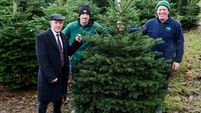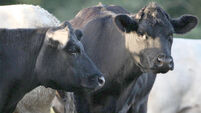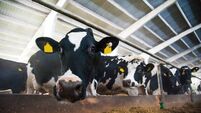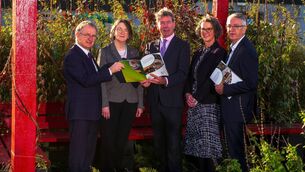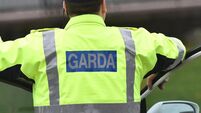Heritage of farriers and blacksmiths celebrated
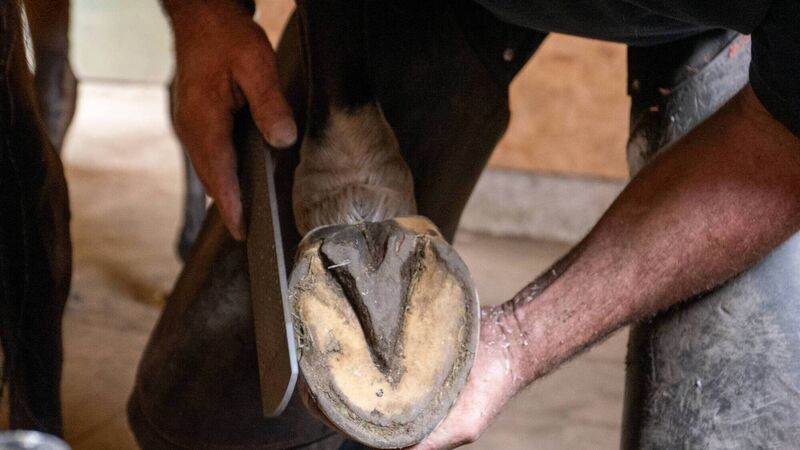
The ancient craft can be traced back some 4,000 years but almost died out after working horses gave way to motors and the arrival of the high-tech era.
The anvil chorus that was often heard in forges across the country as blacksmiths and farriers went about their work is being revived.
It is the sound of an ancient craft that can be traced back some 4,000 years but almost died out after working horses gave way to motors and the arrival of the high-tech era.
Farriers work with horses, but they need training in blacksmithing to properly make a shoe for equines.
Blacksmiths fabricate objects out of iron by hot and cold forging on an anvil and may never have any contact with horses.
There is still a demand for both skills. Farriers make and fit shoes for horses taking part in racing and other equine sports, while blacksmiths engage in decorative metal work, repairing farm machinery and making gates.
Last month, 40 blacksmiths highlighted the craft in a series of challenges at “That Beats Banagher Festival” in Co Offaly.
National Heritage Week, a celebration of Ireland’s natural, built, and cultural past, which continues until Sunday, also include events relating to both crafts.
Memories of the forge in the rural life of Clare will be recalled at Jigs Forge in Fountain, Ennis, on Saturday afternoon.
The event will be hosted by local Cuimhneamh an Chláir cuairteóirí (collectors) Geraldine Greene and Leonard McDonagh.
The event will trace the origins of the forge, its place in local history and the restoration work carried out in recent years by Anthony and Moira Roughan. Local people will share stories and memories of the working forge.
A blacksmith’s life is being outlined daily at Bunratty Folk Park in Clare, and visitors to Craggaunowen in Sixmilebridge, will see first-hand today how farm tools are made.
Master craftsman Tom Allison will demonstrate similar skills at Muckross Schoolhouse in Killarney tomorrow afternoon, while Limerick-Clare College of Further Education and Training at Cappamore, Co Limerick, will be particularly busy.
Eric O’Neil, resident master blacksmith at the campus, will run the last of a four-day free introduction to the craft today.
He will move to Cappamore Show on Saturday, where he will outline the skills involved in making horseshoes and shaping metal.
Last year, Mary Hallinan from near Clonmel in Tipperary, became the first woman to graduate from Ireland’s only City and Guilds-certified training course in blacksmithing and iron craft skills at the Cappamore Campus.
Minister of State Patrick O’Donovan, who attended the graduation, said the students had worked very hard, with some travelling long distances to complete the programme.
He commended Limerick and Clare Education and Training Board and their tutors for their work in making Cappamore the centre of excellence for blacksmithing.
Blacksmith numbers have, of course, dropped compared with the old days when they were to be found at forges in nearly every town, village and crossroads.
That was the era when horses were still being used for farm work and farrier services were much in demand.
Forges had their own sounds and smells. They became great social meeting places. They were cosy haunts on cold winter days because of the heat generated by the furnace to heat metal before it was hammered into shape on an anvil.
People who led in their horses to be shod had time to chat with the blacksmith and anybody else who might be present to watch the sparks fly.
The ancient craft was in many instances handed down in families from one generation to another. Yet, there was more to it than just putting a set of shoes on a horse.
Farriers had to understand the animals, respect their intelligence, become familiar with their personalities, and let them always know who was boss.
They were also known to farmers as anvil vets, who could recognise various foot ailments in horses and treat them in their forges, sometimes with ancient folk cures.
Farriers also had to develop their own techniques with horses and get around them in different ways, often patting them gently and talking them into relaxation.
Kevin Danaher states in his book Irish Country People that a farrier could tell the exact height of any horse or pony by looking at it, or its age by glancing at its teeth.
He could also treat their ailments, lance and cauterise swellings, and flush out their nose or mouth with a syringe made from a pig’s bladder and a short length of hollow elder twig.
Farriers also treated saddle and harness sores with plasters and washes, a major ingredient of which was the water from the stone trough in which they cooled and tempered the hot irons from the forge.

